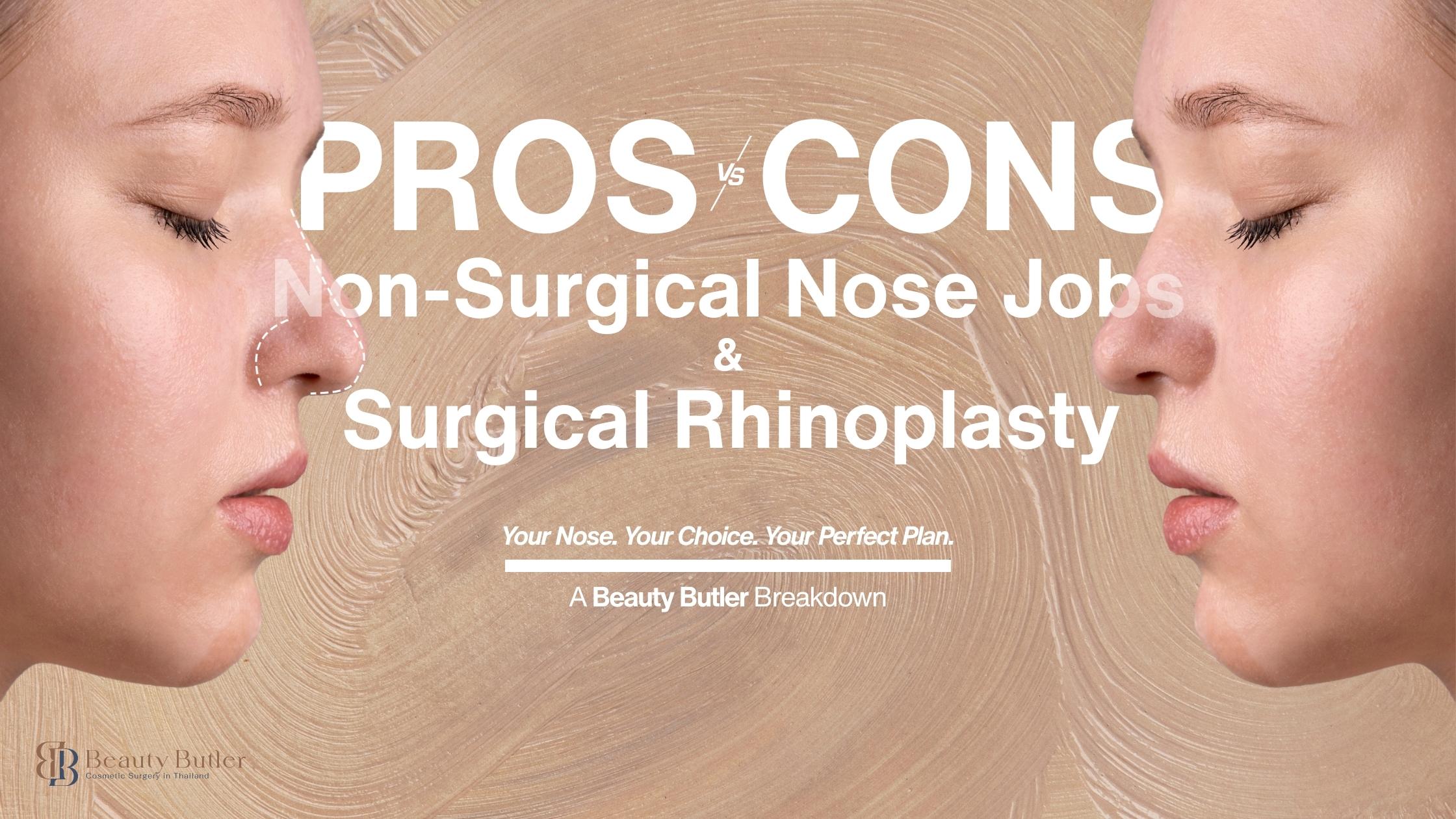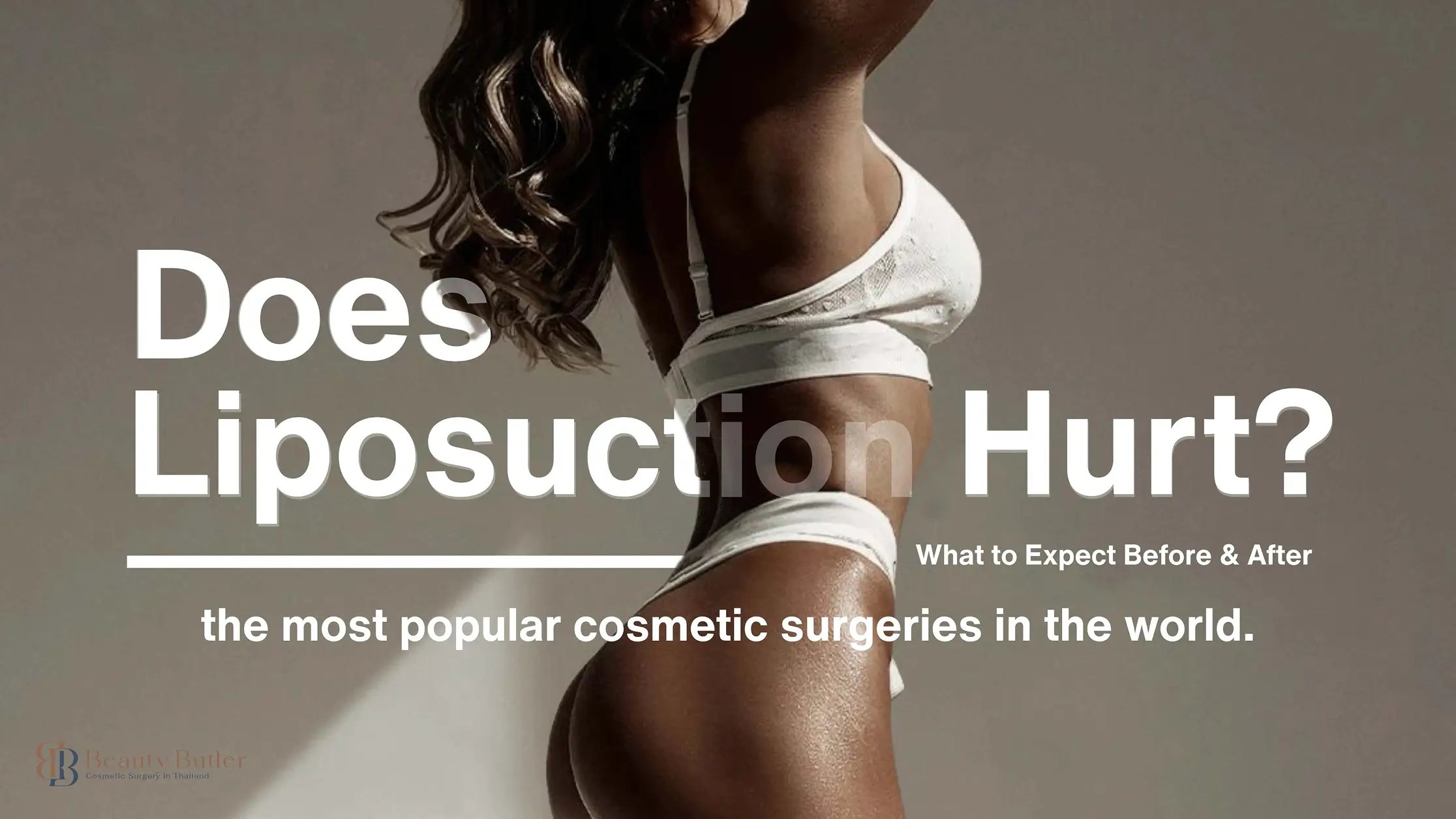.webp)

In 2025, the conversation around nose enhancement has expanded beyond traditional surgery. With the rise of non-surgical nose jobs—also known as liquid rhinoplasty—patients now have a minimally invasive alternative to surgical rhinoplasty. Whether you’re looking for subtle refinements without downtime or a permanent structural change, Thailand has become a global hub for both options. At Beauty Butler, we guide patients through the decision-making process with precision, safety, and honest recommendations, ensuring every choice aligns with your lifestyle, healing expectations, and desired look.
1. Understanding the Two Procedures
Non-Surgical Nose Job (Liquid Rhinoplasty)
- Involves the use of dermal fillers (commonly hyaluronic acid) to reshape and contour the nose.
- Results are immediate but temporary, lasting 12–18 months on average.
- No incisions or downtime—patients return to daily life within hours.
Surgical Rhinoplasty
- A permanent surgical procedure that reshapes the nasal bone and cartilage.
- Can correct structural issues, such as a deviated septum, alongside aesthetic enhancements.
- Requires anesthesia, surgical precision, and a recovery period of 1–2 weeks.
2. Pros & Cons of Each Option
Pros of Non-Surgical Nose Job:
- Minimally invasive with no surgical cuts.
- Quick recovery—often within hours to 1–2 days.
- Immediate visible results.
- Lower upfront cost compared to surgery.
- Results are reversible if hyaluronic acid fillers are used.
Cons of Non-Surgical Nose Job:
- Temporary results, requiring maintenance every 12–18 months.
- Cannot address functional or breathing issues.
- Limited ability to make significant structural changes.
- Risk of filler migration or rare vascular complications.
Pros of Surgical Rhinoplasty:
- Permanent results after a single procedure.
- Can address both cosmetic and functional concerns.
- Greater ability to reshape the nose’s structure.
- No need for repeated maintenance treatments.
Cons of Surgical Rhinoplasty:
- Requires general anesthesia and longer recovery time (7–14 days).
- Higher initial cost compared to fillers.
- Possibility of post-surgery swelling, bruising, or scarring.
- Revision surgery may be necessary in rare cases.
3. Why Thailand Leads in Both Procedures
Thailand’s reputation for world-class cosmetic surgery extends to both surgical and non-surgical nose enhancements. Bangkok’s top clinics, including those partnered with Beauty Butler, offer:
- Board-certified surgeons and aesthetic physicians with global training.
- Advanced imaging and simulation technology for precise results.
- Competitive pricing without compromising patient safety.
- Private recovery rooms for surgery patients and discreet, luxury settings for non-surgical treatments.
4. Safety Considerations
Beauty Butler’s patient-first philosophy ensures your procedure is as safe as it is effective:
- For fillers: Only premium, FDA-approved products with safe injection techniques.
- For surgery: Accredited hospitals, comprehensive pre-op health checks, and highly skilled anesthesia teams.
- Pre-treatment consultations to evaluate skin type, nasal anatomy, and healing potential.
5. Making the Right Choice
Choose Non-Surgical Nose Job if you:
- Want a quick, reversible option with minimal downtime.
- Are looking for subtle contouring instead of major reshaping.
- Do not have breathing problems or internal nasal issues.
Choose Surgical Rhinoplasty if you:
- Want permanent, significant changes in nose shape or function.
- Require correction of both cosmetic and medical nasal issues.
- Are willing to commit to downtime and recovery.
6. Beauty Butler’s Expert Take
At Beauty Butler, we focus on customized patient care—not one-size-fits-all solutions. Whether you choose the convenience of a non-surgical option or the transformative power of rhinoplasty, we ensure your journey is guided by safety, precision, and your personal goals.






.webp)



